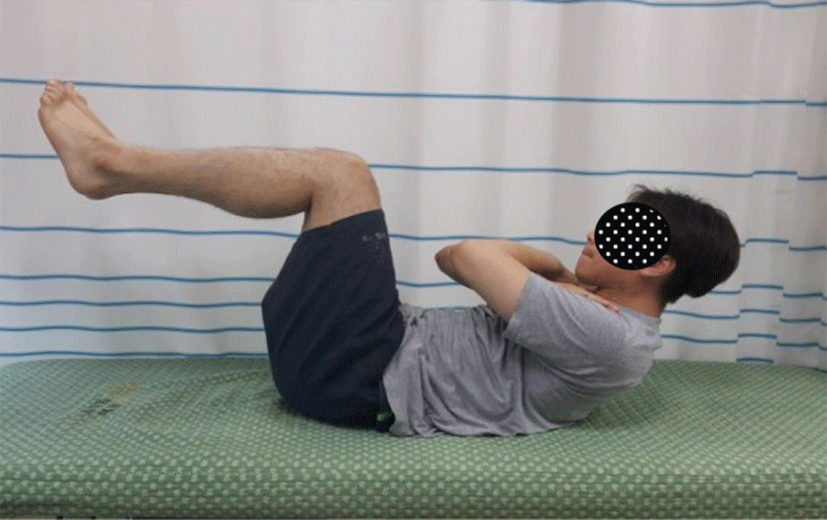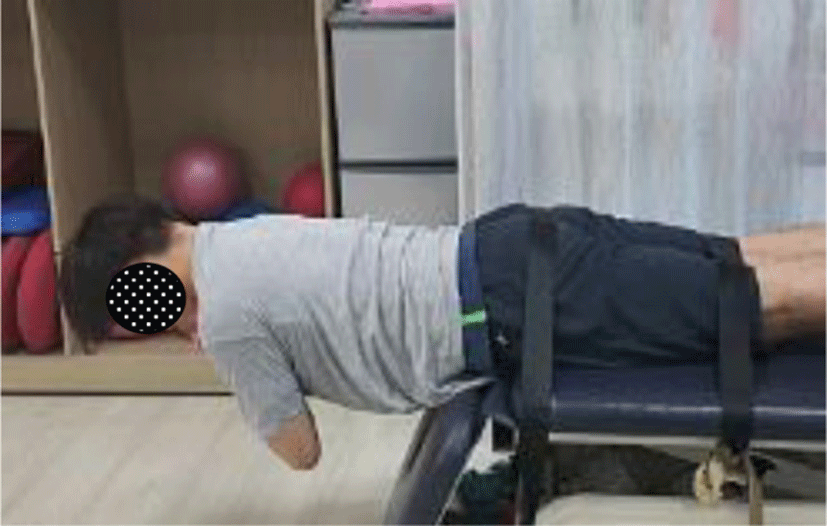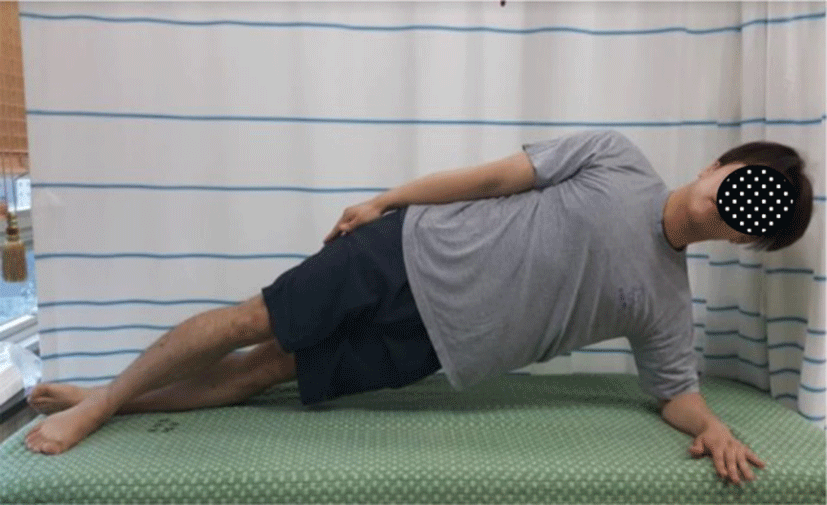INTRODUCTION
Non-specific chronic back pain (NCLBP) is a prevalent disorder, generating large health and social costs, usually accompanied by the painful limitation of movement and often influenced by physical activities and posture.1,2Low back pain (LBP) is the reason for seeking care in nearly 50% of all patients presenting to outpatient physical therapy clinics.3,4 Approximately 23% of cases develop into CLBP.5 Clinicians agree that LBP is heterogeneous.6 Using classification schemes in the treatment of patients based on sub-grouping results in better outcomes than treatment based on clinical guidelines.7,8
Movement system impairment (MSI) based classification by Sahrmann is a system for directing physical therapy in patients with NCLBP at any stage of chronicity.9,10 The clinician categorizes a patient with LBP into 1 of 5 different syndromes based mainly on pain behavior during specific postures or movements.9 The MSI’s categories are described as 1) lumbar flexion, 2) lumbar extension, 3) lumbar rotation, 4) lumbar rotation with flexion and 5) lumbar rotation with extension. Increased symptoms or excessive motion in a specific direction may result in impairments of alignment, stabilization, and movement patterns of the spine.9 Impaired trunk muscles have been described as one of the risk factors of NCLBP,11 that may lead to less controlled trunk movement.12 The balanced isometric support and control of the trunk muscles in the lumbar spine may prevent their impairment.9
Rehabilitation of LBP is related to muscle endurance, timing, and recruitment patterns more than it is to muscle strength.9 Muscle endurance is defined as the ability to maintain suitable activation of the trunk muscle for a long time. The protection of the passive tissue of the lumbar region may be necessary for trunk muscle endurance and maximum strength.13-15 The trunk muscle endurance is distinguished by three muscle groups: the torso flexors, extensors, and lateral musculature,16 and has been used as training to increase fatigue threshold and improve performance in populations with LBP.17,18
According to the MSI classification of chronic back pain, rotation with extension (RE) syndrome is the most common cause of symptoms, while rotation with flexion (RF) syndrome reveals flexible motion and symptoms in the opposite direction of the RE subgroup.
Previous studies have quantified the four directions of trunk muscle endurance for healthy adults and patients with LBP.14 However, no studies have compared trunk muscle endurance between subgroups according to a movement impairment-based classification system. The purpose of this study is to compare trunk endurance testing in four directions between subgroups according to the movement impairment-based classification system.
METHODS
There were 30 subjects included in this study. Volunteers had LBP for longer than 12 weeks, ODI scores of >20 and VAS scores of >2. The subjects were studied in a standardized examination consisting of history and physical examinations for definitive use in participants with LBP. The examiners had 20 years of clinical experience as a physical therapist, and they had taken a course in the theory and practice of the movement impairment-based classification system. According to Sahrman’s suggestion, RE and RF were each classified. Fifteen RE subjects (3 men, 12 women) with a mean age of ±SD of 39.0±11.5 years and fifteen RF subjects (5 men, 10 women) with a mean age of ±SD of 44.8±10.3 years participated in this study.
Patients were excluded from the study if they reported any of the following: spinal surgery in previous three months, kyphosis, scoliosis, stenosis, pregnancy, neurological disease, cancer, rheumatoid arthritis, and shoulder pain, without including RE or RF syndrome. All participants reviewed and signed consent forms before volunteering, and the Institutional Research Review Committee of Inje University gave ethics approval.
The flexor endurance test required subjects to lie on a flat cushioned surface with their hips and knees both flexed at 90 degrees and their arms crossed over their chests. The subjects were required to flex the trunk in a smooth motion, maintaining the position and smooth motion as much as possible (Figure 1).19
For the assessment of extensor endurance, the subjects lied in a prone position on the examination table on the upper edge of the table. It measures how long the subject can maximally maintain the unsupported trunk horizontally while lying prone with a fixed pelvis and, knees and ankles held by straps on a test table (Figure 2).
Finally, for testing lateral trunk musculature, the subject laid on his or her right side. The upper body was supported off the ground by the right elbow and forearm. The legs were straight, with the left foot in front of the right foot. The hip was lifted off the floor while the elbow and feet supported the body, creating a straight line, and the hip held the back straight for as long as possible, until the hip was lowered. After 5-7 minutes rest, the other side was tested (Figure 3).
Paired t-tests assessed the differences between the test results in each group. Independent t-tests assessed the differences between the groups. Statistical Package for the Social Sciences (SPSS) ver. 18.0 (SPSS Inc., Chicago, USA) was used for analyses, and the significance was the adopted value of p<0.05.
RESULTS
Descriptive data were collected on 30 patients with NCLBP, aged 21-57 years (Table 1). The RE group had a longer mean hold time during the extensor endurance test relative to the flexor endurance test (p<0.01), while the RF group was significantly better at the flexor endurance test than the extensor endurance test (p<0.01). The ratio of endurance times between the flexor and extensor endurance tests were also statistically significant between the two groups (p<0.001). The RE group (p<0.01) and the RF group (p<0.01) showed a significant difference in endurance times between the dominant side and non-dominant side bridge tests (Table 2).
| RE (n=15) | RF(n=15) | |
|---|---|---|
| Age, mean (SD) | 39.0±11.5 | 44.8±10.3 |
| BMI (kg/m2 ) | 22.8±2.3 | 22.4±2.0 |
| VAS | 4.5±2.0 | 4.8±1.5 |
| ODI (%) | 27.9±6.0 | 29.5±6.5 |
DISCUSSION
The primary purpose of this study was to determine the four directions of endurance times between subgroups of patients with NCLBP classified according to MSI. Recent studies have suggested that the balance of endurance among the torso flexors, extensors, and lateral musculature distinguish those with LBP. Because these three muscle groups are involved in spine stability during almost any task, endurance should be measured in all three.14,19
Our study showed that the RF subgroup significantly increased in maintenance times (p<0.01) during flexor endurance tests more than in maintenance times during extensors endurance tests, while the RE subgroup decreased in maintenance times (p<0.01) during flexor endurance tests (p<0.01). McGill and colleagues studied three methods of trunk endurance on men with and without low back trouble.19 The subjects without low back trouble were a ratio of 0.64 flexion endurance to the extensor, and subjects with LBP were a ratio of 0.93. Our results differed from those of McGill et al. Our study showed a ratio of 1.5 in the RE subgroup and 0.6 in the RF subgroup in terms of flexion endurance to the extensor. Our study found that the subjects without classification showed similar results with the results of McGill et al. Their maintenance time was an average of 73 seconds in the flexor endurance test and an average of 76 seconds in the flexor extensor test. The RF subgroup has a tendency of posturing and moving the lumbar spine in rotation and flexion with the movements of the spine or extremities.10 In this subgroup, the abdominal muscles provide more trunk support than the back extensor muscles. In contrast, repeated movements and alignments of the lumbar had a tendency of rotation with extension in the RE subgroup. RE subgroup may build more dominant recruitment of the back extensor muscles than the abdominal muscles.9 Isometric contraction by appropriate torso muscle control provides balance and functional movement of the lumbar spinal column. Pain or excessive motion to flexion direction in the RF subgroup may be related to the instability of lumbar segment. In addition, the RE subgroup may have problems in the extension direction.9,20 Therefore, the RF subgroup had increased endurance times in flexion direction, while the RE subgroup had increased endurance times in extension direction.
The present study showed significantly different maintenance times of the right and left sides during lateral endurance tasks (p<0.01). Lateral endurance testing requires optimal challenges to the internal and external oblique muscles and quadratus lumbarum.21 Both subgroups had rotational restriction, the anterolateral trunk wall and the oblique muscles may not contract in lateral endurance testing.
In the RF subgroup, when standing in a swayback posture, the rectus abdomens provides more trunk support than the back extensor muscle.9 Both subgroups have rotation impairment in the inadequate recruitment of the paraspinal muscles and the external and contra lateral internal oblique.
This study has some limitations. It is difficult to quantify the value of endurance between the subgroups using MSI classification because the sample size was small. There are less male subjects than there are female subjects. In addition, we did not compare lateral trunk muscle endurance between the two subgroups. Lumbopelvic rotation during extremity movement rotation in the RE subgroup is possible because of strong activation trunk back muscles (more than abdominal muscles). However, lumbopelvic rotation in the RF subgroup is possible with strong abdominal muscles (more than trunk back muscles). Further studies will be needed to determine the two groups via activation of the muscle through electromyogram.
CONCLUSIONS
Our study compared trunk endurance tests between subgroups based on movement system impairment. A rotation with extension group had a longer mean hold time during the extensor endurance test than during the flexor endurance test, while a rotation with flexion group was better at the flexor endurance test than the extensor endurance test. The rotation with extension group and rotation with flexion group showed a difference in endurance times between the left and right side bridge tests. Therefore, the trunk muscle endurance tests used to assess and treat patients with NCLBP display different endurance results between and within MSI subgroups.










